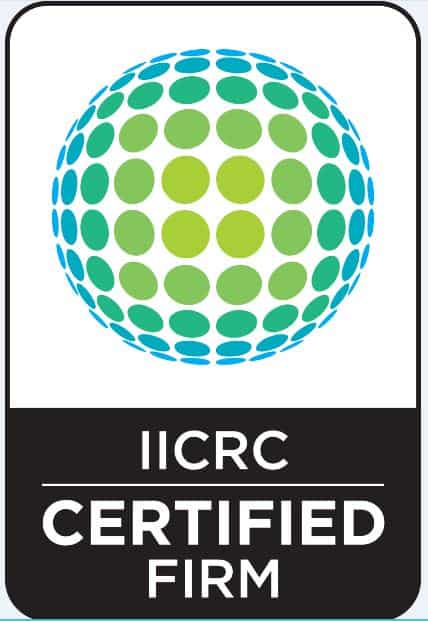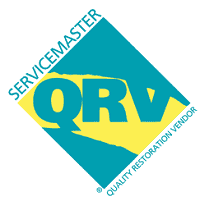Whether it’s from a burst washer hose, a clogged drain, or a sudden plumbing leak, flooding in your laundry room can happen fast and cause major damage if not handled right away.
At ServiceMaster of Lake Shore, we’ve been providing water damage restoration services in Chicago for more than 30 years.
Here’s what to do when your laundry room floods, from the first safety steps to full restoration.
Key Takeaways
- If your laundry room has flooded, act quickly and shut off water and power first, move wet items, remove standing water, document the damage, and address the cause.
- Call ServiceMaster of Lake Shore to restore your property and prevent hidden damage: (312) 707-8597.
- Prevent future flooding by maintaining your washer: replace hoses every few years with durable braided ones, avoid overloading, keep the machine level, schedule yearly inspections, and consider a leak detector with automatic shutoff.
Steps to Take if Your Laundry Room Floods in Chicago
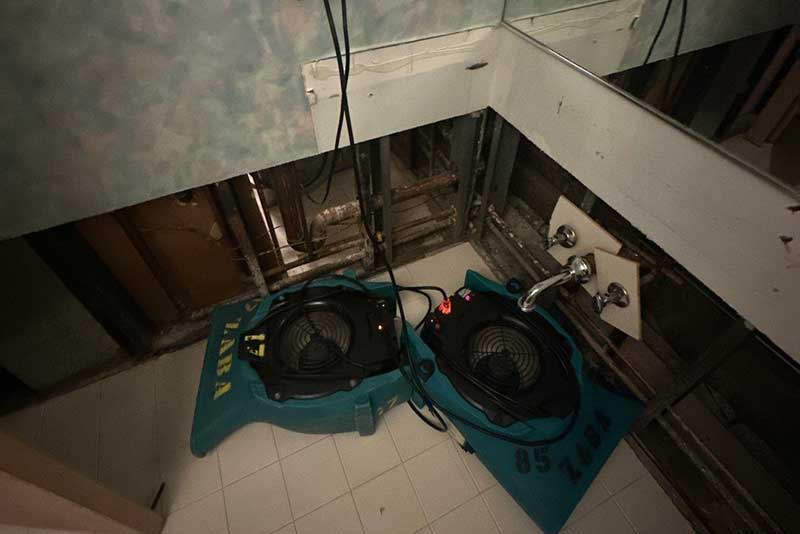
1. Shut Off Water and Power
Water spreads quickly and can damage everything it touches.
Stopping the source immediately helps limit the mess and keeps you safe from electrical hazards.
- Turn off the water supply to the washer. Usually, you’ll find your home’s shutoff valves behind or beside the machine.
- Switch off electricity to the laundry room from your home’s breaker panel. Water and electricity are a dangerous mix.
Pro tip: If you can’t reach the shutoff valve without stepping into standing water, don’t risk it – call an emergency plumber instead.
2. Move Wet Items and Furniture
The longer items stay wet, the higher the chance they’ll grow mold or be damaged permanently.
- Take out laundry, rugs, baskets, and any furniture in the room.
- Move them to a dry, well-ventilated area to prevent mildew.
Pro-tip: Use heavy-duty plastic bins, large trash bags, or a dolly for heavier items.
3. Get Rid of the Standing Water
The sooner you remove standing water, the less likely it is to seep into flooring and walls, thereby causing even more damage in your home.
- Use towels, a mop, or a wet/dry vacuum to remove as much water as possible.
- For larger floods, it’s best to let ServiceMaster of Lake Shore handle extraction. We have high-powered pumps and vacuums that work faster and more thoroughly than anything you have at home.
4. Document the Damage
You’ll need photos of the damage to file an insurance claim and secure the compensation you need for your damaged items.
- Take pictures and videos of the water, affected areas, and damaged belongings.
- Keep a list of everything affected, including brand names and purchase dates for appliances if possible.
5. Identify and Fix the Original Problem
If you don’t address the root cause of the flood, you’re only creating a temporary fix. Plus, you risk another flood that will undo all your hard work.
- Common culprits include burst washer hoses, clogged drains, leaky supply lines, or faulty appliances.
- If you can’t find the cause, or if the repair is beyond a simple DIY fix, call a licensed plumber.
6. Call ServiceMaster of Lake Shore
Even if it looks like all the water is gone, moisture can linger in hidden places and cause serious damage over time.
Here’s how our team helps:
- We use advanced tools to detect hidden water in walls, floors, and insulation before it turns into mold.
- Our high-capacity pumps and vacuums quickly remove any remaining water.
- We run commercial fans and dehumidifiers until the area is completely dry.
- We thoroughly clean and disinfect the space to eliminate odors, bacteria, and contaminants.
- We restore walls, flooring, and cabinetry that were damaged by water.
Call us now for 24/7 help: (312) 707-8597
How to Prevent Laundry Room Flooding in the Future
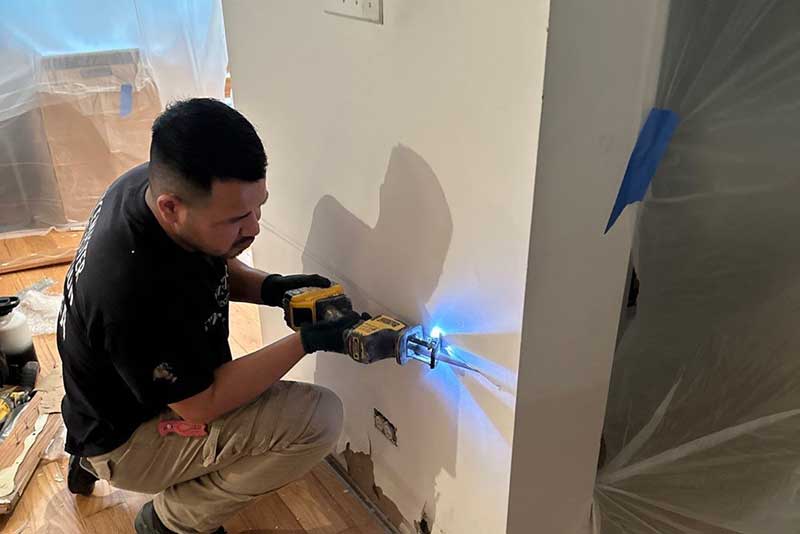
- Replace old washer hoses every 3–5 years. Stainless steel braided hoses are more durable than rubber.
- Don’t overload the washer. Too much weight strains hoses and seals.
- Install a water leak detector with an automatic shutoff valve for peace of mind.
- Have appliances inspected yearly to catch small problems before they become big ones.
- Keep the washer level – uneven machines can shake loose connections over time.
How We Restored an Old Town Home After Flooding in the Laundry Room
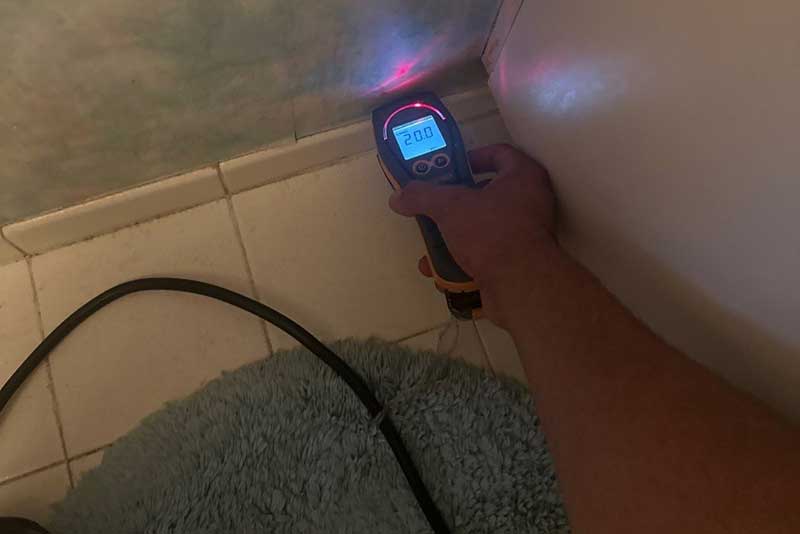
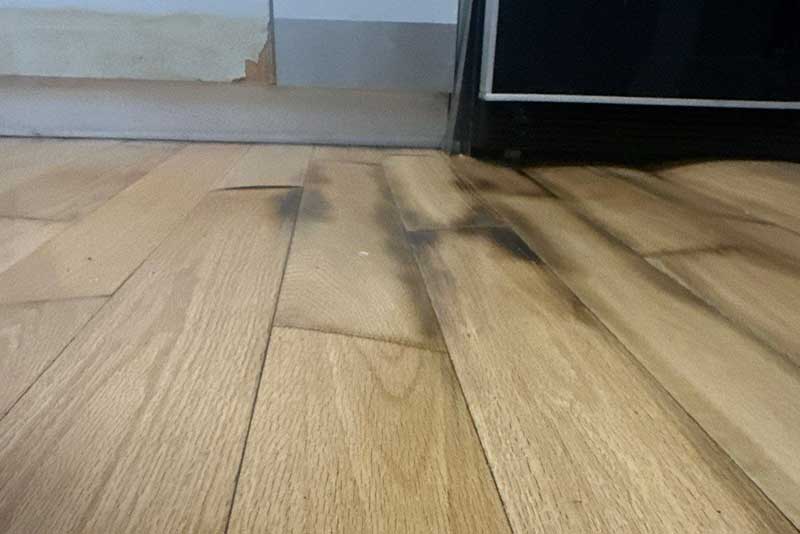
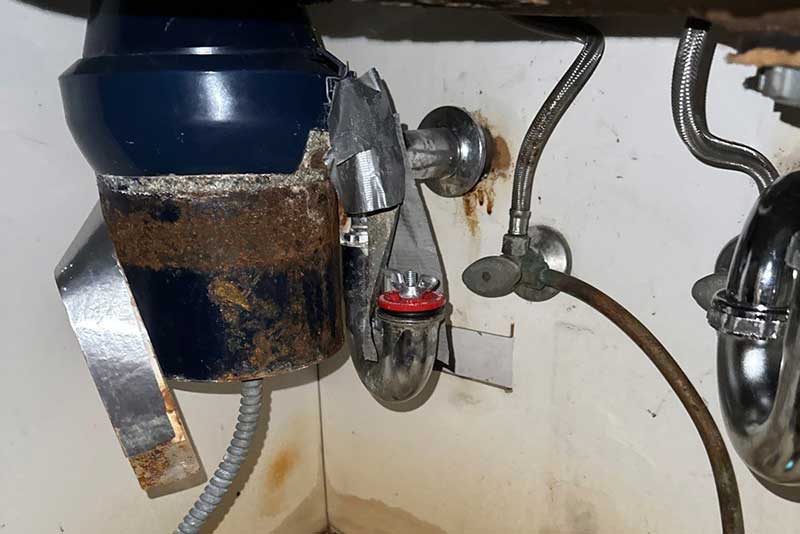
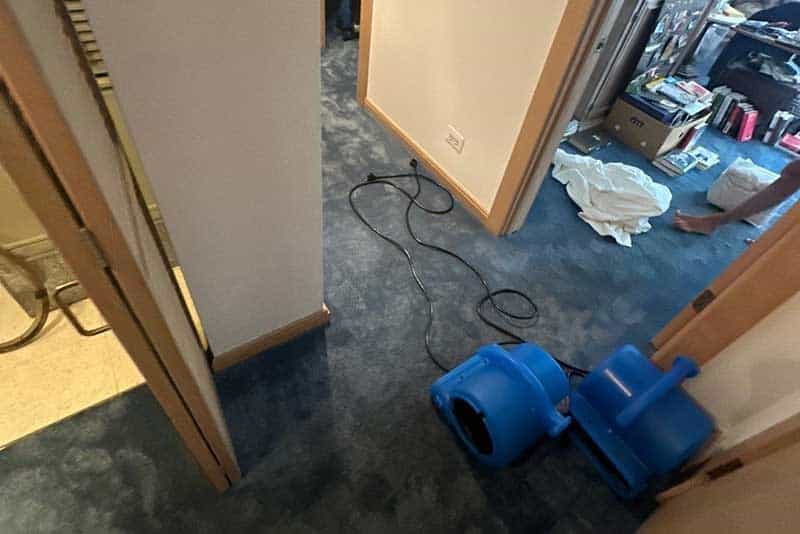

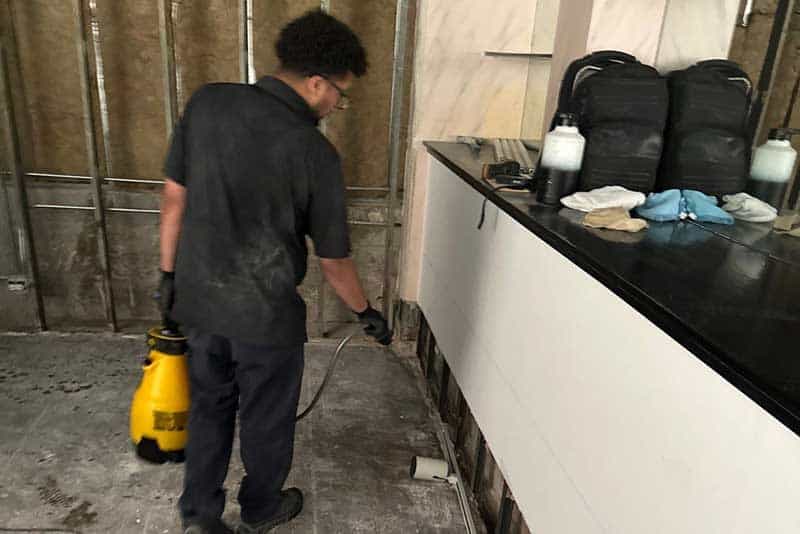
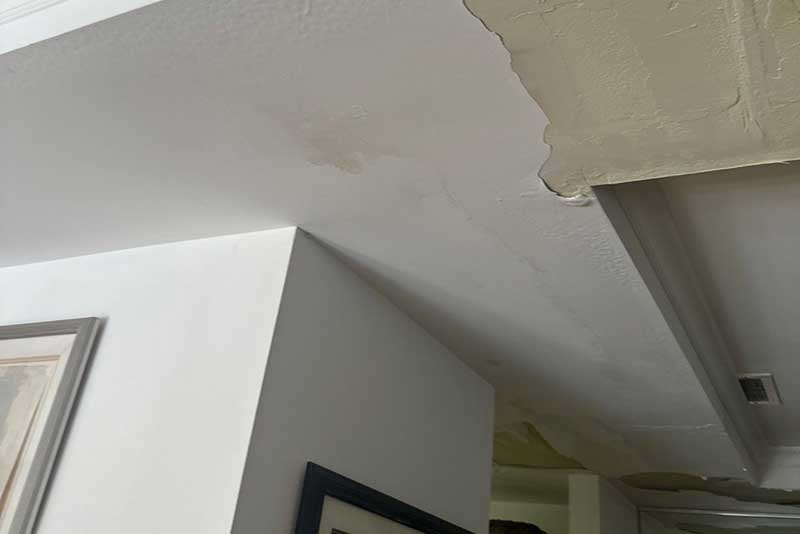
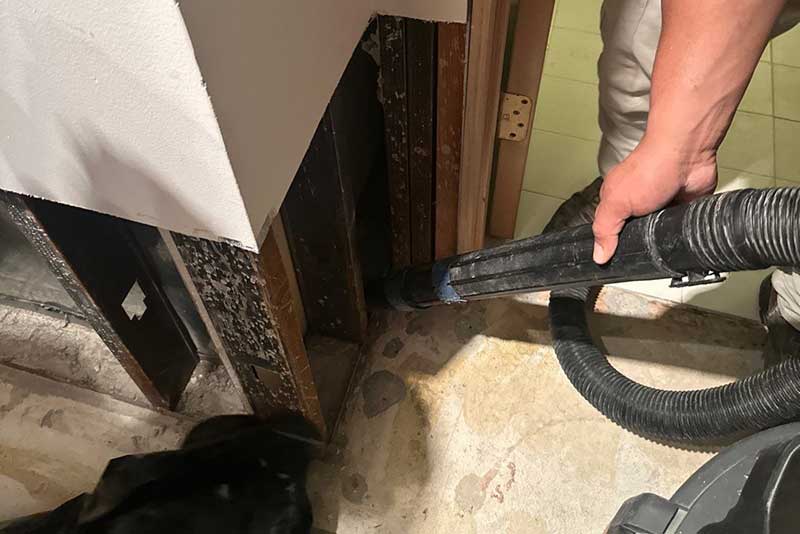

In an Old Town home in Chicago, an appliance leak from the upstairs utility closet caused Category 2, Class 2 water damage throughout both floors.
- Upstairs, our team removed sections of drywall, detached the stacked washer and dryer, and pulled all baseboards to access hidden moisture.
- We also sanitized the affected hallway and bathroom after removing carpet, padding, and part of the shared bathroom wall.
- Downstairs, the water spread to the powder room, kitchen, dining room, hallway, and living room. We removed snaplock flooring, detached cabinets and vanities, and addressed moisture in ceilings and behind walls.
- All exposed areas, including joists and studs, were thoroughly cleaned and dried.
With containment in place and drying equipment running for four days, we stopped the damage from spreading and restored the home safely and efficiently.
Trust ServiceMaster of Lake Shore for Your Water Damage Restoration Needs!
A flooded laundry room can be stressful, but fast, informed action can make all the difference.
If you’re dealing with laundry room flooding in Chicago or the surrounding suburbs, ServiceMaster of Lake Shore is here for you 24/7.
From emergency water extraction to full restoration, we’ll get your home back to normal quickly and safely.
Call us today to learn more about our services and how we can help: (312) 707-8597.
FAQs
What causes a laundry room to flood?
Common causes include burst hoses, clogged drains, faulty washing machines, or leaks in the water supply lines.
How can I tell if my laundry room has water damage?
Look for warped floors, musty odors, peeling paint, or discoloration on walls and ceilings. A moisture inspection can confirm hidden water damage.
How long does it take to dry out a flooded room?
With professional equipment, most rooms dry in 2–3 days, but severe cases can take longer.
Can I save my washer and dryer after a laundry room flood?
It depends on the extent of damage and whether the appliances were submerged. Have them inspected by a professional before using them again.
What are the dangers of water damage?
Floodwater in your laundry room can cause more than just a visible mess — it can seep under flooring, into walls, and even into your home’s structure.
Here are just a few of the hidden risks water damage poses:
- Warped flooring from moisture trapped underneath.
- Mold growth in as little as 24–48 hours.
- Weakened drywall that can crumble or harbor bacteria.



